2015: A Year in Review
2015 proved to be a busy and exciting year for the School. Here are some of the year’s highlights.
.hideme { height: 1px; border: none } .noborder{border: none} .offscreen { height: 1px; width: 1px; position: absolute; overflow: hidden; top: -10px; }
| date | Headline | Photo |
|---|---|---|
| JAN 20 |
New High-Speed 3D Microscope—SCAPE—Gives Deeper View of Living ThingsOpening new doors for biomedical and neuroscience research, Elizabeth Hillman, associate professor of biomedical engineering at Columbia Engineering and of radiology at Columbia University Medical Center, has developed a new microscope that can image living things in 3D at very high speeds. |
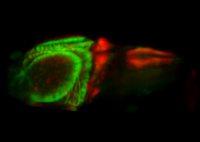 |
| FEB 4 |
Smartphone, Finger Prick, 15 Minutes, Diagnosis—Done!A team of researchers, led by Samuel K. Sia, associate professor of biomedical engineering at Columbia Engineering, has developed a low-cost smartphone accessory that can perform a point-of-care test that simultaneously detects three infectious disease markers from a finger prick of blood in just 15 minutes. |
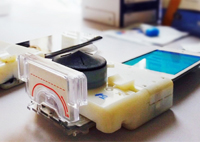 |
| FEB 5 |
Professor David D. Yao Elected to the National Academy of EngineeringYao, the Piyasombatkul Family Professor of Industrial Engineering and Operations Research, was cited for his leading scholarship and research of stochastic systems and their applications in engineering and service operations. |
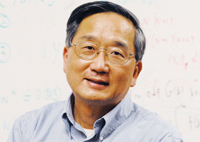 |
| FEB 11 |
Student Team Wins USAID Fighting Ebola Grand ChallengeA team of third-year students—Jason Kang (Biomedical Engineering), Katherine Jin (Computer Science and Biology, Columbia College), and Kevin Tyan (Biology, Columbia College)—has won the USAID Fighting Ebola Grand Challenge with their solution, Highlight, a powdered additive for bleach solutions that improves decontamination of infectious diseases. |
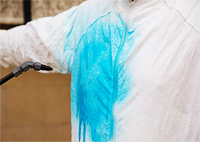 |
| MAR 16 |
New Technology May Double Radio Frequency Data CapacityA team of Columbia Engineering researchers has invented a technology—full-duplex radio integrated circuits—that can be implemented in nanoscale CMOS to enable simultaneous transmission and reception at the same frequency in a wireless radio. |
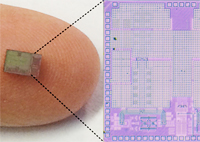 |
| APR 15 |
Columbia Engineer Invents Video Camera that Runs without a BatteryA research team led by Shree K. Nayar, T.C. Chang Professor of Computer Science at Columbia Engineering, has invented a prototype video camera that is the first to be fully self-powered—it can produce an image each second, indefinitely, of a well-lit indoor scene. |
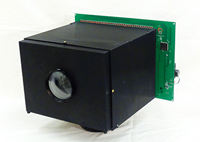 |
| APR 24 |
Engineering Entrepreneurs Shine at Columbia Venture CompetitionThe annual event brought together student, post-doc, and alumni entrepreneurs from Columbia Engineering, Columbia College, the School of International and Public Affairs, and other University schools, as part of the University-wide entrepreneurship competition that offered a prize pool of $250,000. |
 |
| MAY 14 |
Senior Design Expo Showcases Engineering Design and InnovationColumbia Engineering seniors had the opportunity to showcase their capstone projects at the School’s Senior Design Expo. Attendees learned about the mechanics, design, and engineering behind a wide range of projects and prototypes from all nine departments. |
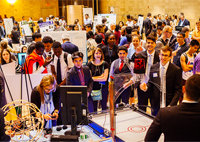 |
| MAY 26 |
One Step Closer to a Single-Molecule DeviceUnder the direction of Latha Venkataraman, associate professor of applied physics at Columbia Engineering, researchers have designed a new technique to create a single-molecule diode, and, in doing so, they have developed molecular diodes that perform 50 times better than all prior designs. |
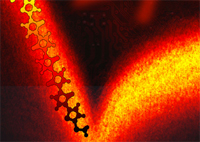 |
| JUN 15 |
World's Thinnest Light Bulb—Graphene Gets Bright!Led by Young Duck Kim, a postdoctoral research scientist in James Hone’s group at Columbia Engineering, a team of scientists from Columbia, Seoul National University, and Korea Research Institute of Standards and Science have demonstrated—for the first time—an on-chip visible light source using graphene, an atomically thin and perfectly crystalline form of carbon, as a filament. |
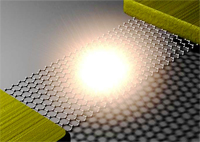 |
| SEP 2 |
Columbia Engineering Team Develops Targeted Drug Delivery to LungLed by Young Duck Kim, a postdoctoral research scientist in James Hone’s group at Columbia Engineering, a team of scientists from Columbia, Seoul National University, and Korea Research Institute of Standards and Science have demonstrated—for the first time—an on-chip visible light source using graphene, an atomically thin and perfectly crystalline form of carbon, as a filament. |
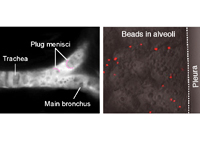 |
| SEP 29 |
Professor Kartik Chandran Wins MacArthur "Genius" GrantLed by Young Duck Kim, a postdoctoral research scientist in James Hone’s group at Columbia Engineering, a team of scientists from Columbia, Seoul National University, and Korea Research Institute of Standards and Science have demonstrated—for the first time—an on-chip visible light source using graphene, an atomically thin and perfectly crystalline form of carbon, as a filament. |
 |
| OCT 13 |
Columbia Engineering Magazine Feature: Engineering Faculty Lead Nanoscience DiscoveriesColumbia has been at the forefront of nanoscience research for more than 15 years, and, with the University’s launch of the Columbia Nano Initiative, activity on this front is accelerating. Here we spotlight just a few of our professors whose work is advancing the field of nanoscience and, in many ways, pushing boundaries far beyond the nanoscale. |
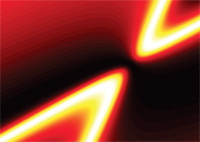 |
| NOV 2 |
Columbia to Lead $1.25 Million Northeast Big Data Innovation HubAs lead agency for the Northeast Big Data Innovation Hub, one of four NSF-sponsored hubs, Columbia will bring together experts in the public and private sector to collaborate on data-driven solutions to problems in health care, energy, finance, urbanization, natural science and education. |
 |
| DEC 7 |
Columbia Engineers Build Biologically Powered ChipColumbia Engineering researchers have, for the first time, harnessed the molecular machinery of living systems to power an integrated circuit from adenosine triphosphate, the energy currency of life. |
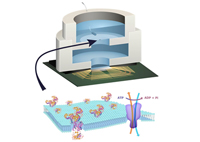 |
